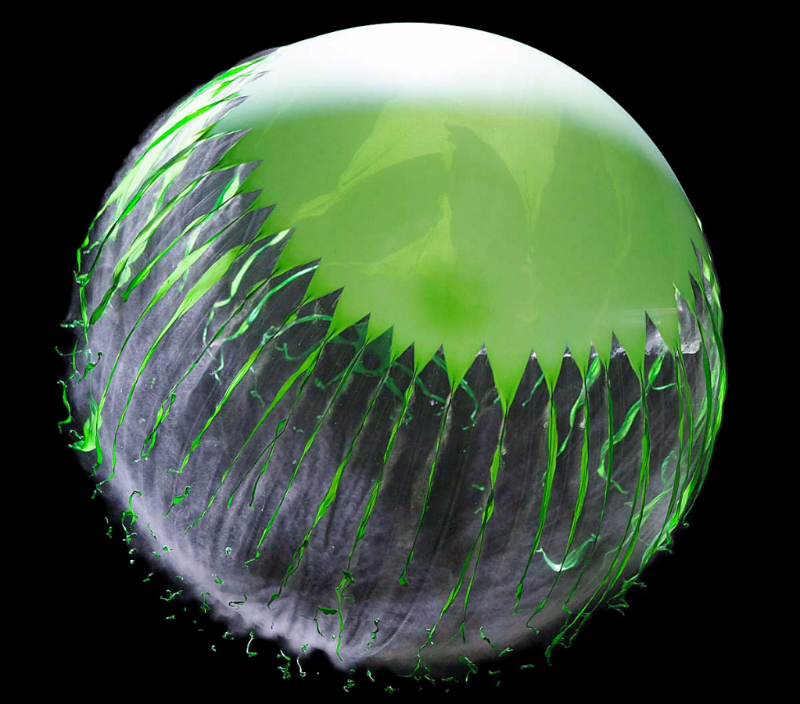If you look hard enough, you can find some amazing science behind almost everything in our world - and a bursting balloon is certainly on that list. Inspired by a dramatic photograph, French physicist Sébastien Moulinet investigated exactly what happens when a balloon pops, with the help of a high-speed camera and a blade.
Moulinet and his colleague Mokhtar Adda-Bedia analysed the way that a balloon bursts in relation to the tension on its surface - tension set by the inflation level of the balloon. They found that it wasn't just the internal pressure but also the thickness and curvature of the balloon membrane that caused it to split in one of two ways.
At a low level of inflation, balloons burst along one or two seams. However, once a certain inflation threshold is reached, multiple 'cracks' appear in the membrane - as many as 40 in some cases. Moulinet and Adda-Bedia think this principle could stay true for other materials such as glass, so it won't just be at children's parties where their research could be useful.
"The higher the stress, the more elastic energy is stored in the balloon, and then the more numerous the fractures need to be to release the stored energy," says Moulinet.
The balloons pumped up by the researchers - flat sheets of latex clamped over a hole and punctured at the apex - exploded in a many-armed, octopus-like shape once they'd reached a certain level of inflation. These tears were shown to spread out radially from the puncture point at high pressures.
 Jacques Honvault
Jacques Honvault
That ties in with some earlier research from Michael Marder of the University of Texas. Having written a paper based on rubber fracturing, Marder had become puzzled by the 'rubber octopus' shapes left by burst balloons that had been caught in trees - the new study from Moulinet and Adda-Bedia, published in Physical Review Letters, seems to explain those shapes.
"Fragmentation occurs when the crack tip speed attains a critical velocity for which tip splitting becomes the sole available mechanism of releasing the stored elastic energy," the researchers conclude. "Given the general character of the fragmentation processes, this framework should be applicable to other crack networks in brittle materials."
Watch below to see exactly how the rips in the balloon material occur, and how the number of tears increase as the pressure rises:
